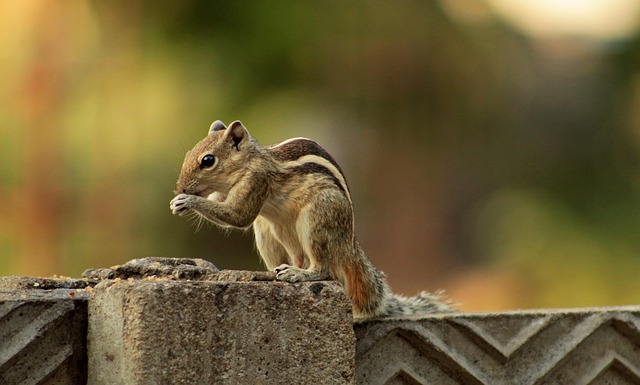In the heart of New Bedford, MA, a growing awareness of environmental sustainability is reshaping outdoor spaces. This article explores eco-friendly fencing materials and their benefits for your yard and the local ecosystem. From understanding the options available to choosing popular sustainable choices, we delve into installation tips, cost considerations, and local initiatives promoting green solutions. Discover how you can contribute to a healthier environment while enhancing your outdoor space.
- Understanding Eco-Friendly Fencing Options in New Bedford
- Benefits of Using Sustainable Fencing Materials
- Popular Eco-Conscious Fencing Choices for Your Yard
- Installation Tips for Long-Lasting Green Fences
- Cost Analysis: Eco-Friendly vs Traditional Fencing
- Local Initiatives Promoting Eco-Safe Outdoor Solutions
Understanding Eco-Friendly Fencing Options in New Bedford
In New Bedford, MA, understanding eco-friendly fencing options is a growing priority for many residents and businesses looking to reduce their environmental impact while enhancing outdoor spaces. These materials offer not just aesthetic appeal but also numerous ecological benefits, from minimizing waste to promoting biodiversity. Eco-friendly fencing is made from sustainable resources such as recycled plastic, bamboo, or organic wood treatments, providing durable alternatives to traditional vinyl or metal fences.
New Bedford’s diverse landscape and climate present unique challenges when selecting fencing materials. Fortunately, eco-friendly options cater to these considerations, offering flexibility in design and installation. Whether it’s for privacy, security, or aesthetic purposes, there are various styles available that blend seamlessly with the local environment while promoting sustainability practices.
Benefits of Using Sustainable Fencing Materials
The use of eco-friendly fencing materials offers numerous advantages for both homeowners and the environment in New Bedford, MA. One of the primary benefits is their sustainability—these materials are typically made from renewable resources or recycled products, reducing the carbon footprint associated with traditional fencing options. For instance, bamboo, a fast-growing grass, can be turned into durable and aesthetically pleasing fences while preserving forests and ecosystems.
Moreover, sustainable fencing materials often have a longer lifespan compared to conventional ones. They are designed to withstand various weather conditions, including harsh New Bedford winters, without fading or rotting. This longevity not only minimizes the need for frequent replacements but also reduces construction waste. Additionally, these materials can contribute to local biodiversity by providing habitats and food sources for wildlife, fostering a healthier ecosystem right in one’s backyard.
Popular Eco-Conscious Fencing Choices for Your Yard
In New Bedford, MA, homeowners increasingly opt for eco-conscious fencing materials that offer both aesthetic appeal and environmental benefits. Popular choices include recycled plastic and wood composite fences, which are durable and low-maintenance alternatives to traditional wood or vinyl options. These materials are made from reclaimed wood fibers and plastic resins, reducing the demand for new resources and minimizing waste.
Another sustainable option is natural, untreated wood fencing, particularly when sourced locally. Cedar and redwood are known for their resistance to rot and insects, eliminating the need for chemical treatments. Additionally, living fences featuring evergreen plants or hedges offer a dynamic, green solution that promotes biodiversity and provides year-round privacy. These eco-friendly choices not only enhance the curb appeal of yards but also contribute to a greener and more sustainable New Bedford community.
Installation Tips for Long-Lasting Green Fences
When installing an eco-friendly fence, proper technique and high-quality materials are key to ensuring longevity. Start by preparing the groundwork, marking out the perimeter accurately, and clearing any debris or obstructions. Choose a suitable location for your fence, considering both aesthetic appeal and practical factors like sunlight exposure and proximity to water sources.
Use durable, recycled materials such as plastic, bamboo, or metal, and ensure they are properly secured with eco-conscious fasteners. Post-installation, regular cleaning and maintenance will keep your fence vibrant and functional. Check for loose boards, replace any worn components, and apply protective coatings to shield against the elements. By following these tips, you can enjoy a beautiful, sustainable fence that enhances your New Bedford, MA property while contributing to a greener environment.
Cost Analysis: Eco-Friendly vs Traditional Fencing
When considering fencing options, one cannot ignore the economic aspects. While eco-friendly materials may be perceived as more expensive upfront, they offer long-term cost savings. Traditional fences often require frequent repairs and replacements due to their susceptibility to weather conditions and wear and tear, leading to recurring expenses. In contrast, eco-friendly alternatives are built to withstand various environmental factors, ensuring a longer lifespan with minimal maintenance needs.
Over time, the initial investment in sustainable fencing materials pays off. These products not only reduce waste but also lower overall ownership costs. New Bedford residents can benefit from energy savings as well, as many eco-friendly options are designed to provide insulation and temperature regulation benefits, potentially reducing heating and cooling bills.
Local Initiatives Promoting Eco-Safe Outdoor Solutions
New Bedford, MA, has been at the forefront of local initiatives promoting eco-safe outdoor solutions. The city’s commitment to sustainability is evident in its growing adoption of environmentally friendly fencing materials. Residents and local businesses are increasingly opting for options like recycled plastic, bamboo, and wood from certified sustainable sources. These choices not only enhance the aesthetic appeal of properties but also contribute to a healthier environment by reducing waste and preserving natural resources.
Local government and community organizations have played a pivotal role in these efforts through educational campaigns, grants, and partnerships with eco-conscious suppliers. As a result, New Bedford is seeing a significant shift towards sustainable fencing, setting an example for other communities across the region to follow suit. This trend reflects a broader global movement towards greener lifestyles, where every choice, from fencing materials to daily habits, is considered in the context of ecological preservation.
